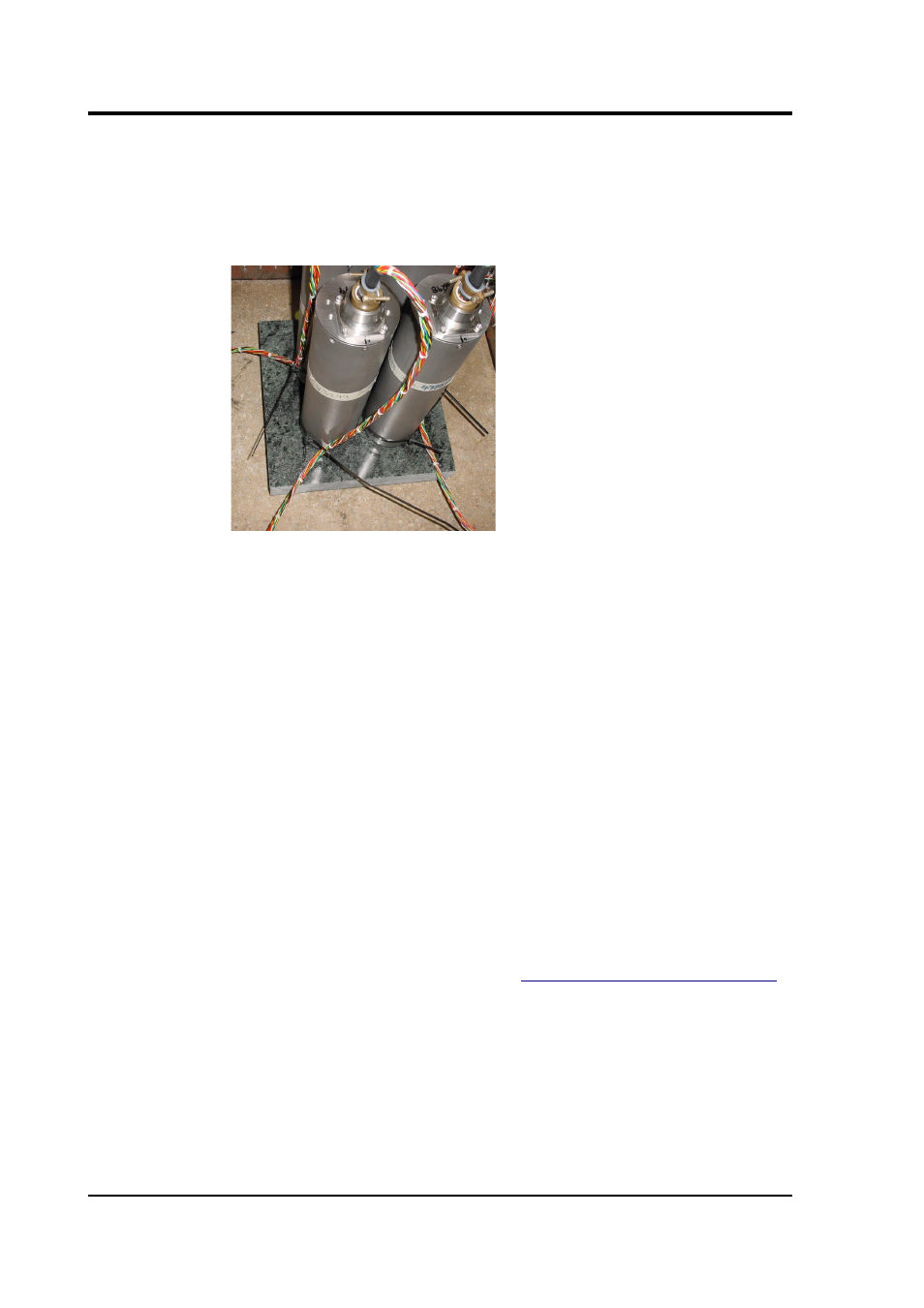Guralp Systems CMG-40T User Manual
Page 20

CMG-40T
4. Pour a layer of loose, fine sand into the pit to cover the base. The type of
sand used for children's sand-pits is ideal, since the grains are clean, dry
and within a small size range. On top of the sand, place a smooth, flat
granite plinth around 20 cm across, and shift it to compact the sand and
provide a near-level surface.
Placing a granite plinth on a sand layer increases the contact between the
ground and the plinth, and improves the performance of the instrument.
There is also no need to mix concrete or to wait for it to set, as in step 4.
5. Alternatively, if time allows and granite is not available, prepare a
concrete mix with sand and fine grit, and pour it into the hole. Agitate
(“puddle”) it whilst still liquid, to allow it to flow out and form a level
surface, then leave to set. Follow on from step 7.
Puddled concrete produces a fine-textured, level floor for emplacing the
seismometer. However, once set hard, the concrete does not have the
best possible coupling to the subsoil or bedrock, which has some leeway
to shift or settle beneath it.
6. Alternatively, for the most rapid installation, place loose soil over the
bottom of the pit, and compact it with a flat stone. Place the seismometer
on top of this stone. This method emulates that in step 3, but can be
performed on-site with no additional equipment.
7. Set up the instrument as described in
Section 3.1, “Installing in vaults”
(steps 4 to 9).
8. The instrument must now be shielded from air currents and temperature
fluctuations. This is best done by covering it with a thermal shield.
An open-sided box of 5 cm expanded polystyrene slabs is recommended.
If using a seismic plinth on sand (from steps 3–4 or 5), ensure that the
box is firmly placed in the sand, without touching the plinth at any point.
20
Issue A
